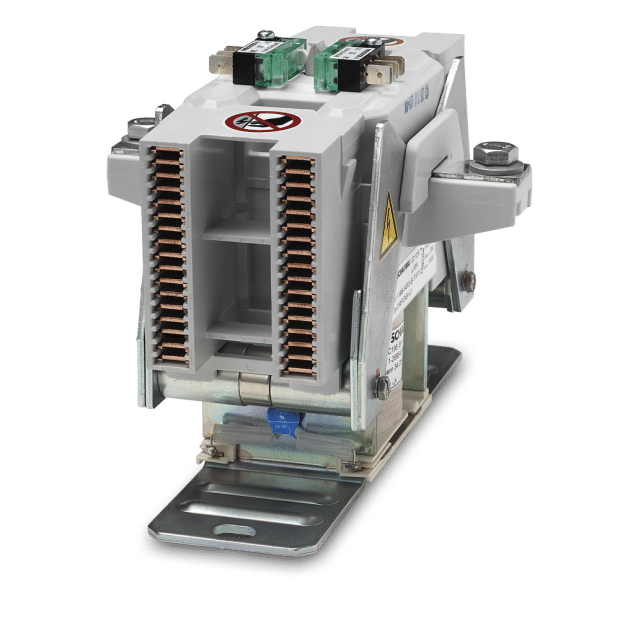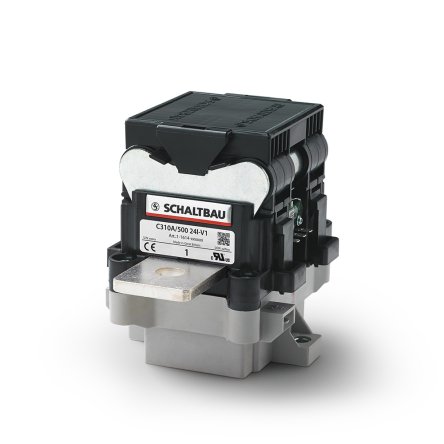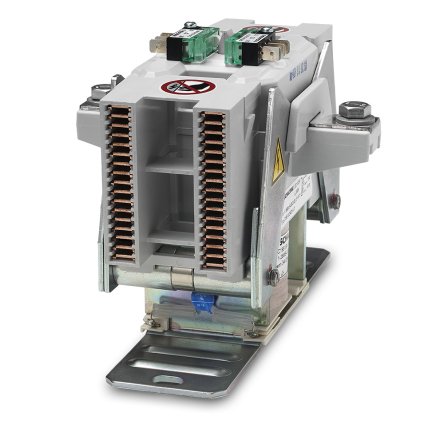Galvanic isolation in electrical commercial vehicles
Contactor C195 X bidirektional
The global demand for light, battery-powered commercial vehicles (LCVs) is increasing considerably. This is not difficult to understand since, in addition to the most important aspect of environmentally friendly transport, these vehicles also offer other impressive advantages. For example, in direct comparison, the drive mechanism of an electric vehicle is significantly lower maintenance and the service life is noticeably longer than conventionally powered vehicles. This results in markedly greater efficiency over short and medium distances. Numerous manufacturers have recognised the potential and already offer electric commercial vehicles for these fields of application. Nevertheless, factors such as the range, the loading speed and operational safety play an important role in the acceptance of electromobility. In this regard, Schaltbau is contributing to making electric vehicles safer, and therefore to a greater acceptance of E-vehicles in society.
Safety between vehicle and battery
Electric vehicles are powered by an electric motor which draws its energy from a high-capacity battery unit. In the inverter unit, three-phase alternating voltage is generated from the DC voltage, which is then fed to the drive motor. Lithium-ion batteries are currently the most widespread battery technology for electromobility. DC contactors play an important role in the safety circuit, because they disconnect the batteries in the event of a fault, thus establishing galvanic isolation between the battery and the rest of the vehicle’s electrical system. All-pole disconnection currently occurs with 2 unidirectional contactors. One contactor is usually operated inversely (reverse polarity) so that depending on the direction of current (charging / discharging) at least one contactor is interconnected with the correct polarity (both contactors always switch off simultaneously).
Schaltbau provides fully fledged bidirectional contactors. The contact therefore offers identical disconnection performance irrespective of the current direction. A second contactor is therefore not compulsory for the system, unless other requirements necessitate a two-pole disconnection mechanism (e.g. functional safety requirements).
Requirements for the switch voltage and the switch current differ depending on the power class of the vehicle.
The C310 family usually covers the power class of cars or LCVs.
For medium-size commercial vehicles, more powerful components are appropriate, such as the C195X.
What do the contactors do?
- In normal operation, the contactors switch on and off load-free (a large number of mechanical switching operations are possible).
- In the event of a fault, the contactors switch off at full load (only a few switching operations possible, due to high wear to the contacts resulting from electric arc formation).
Why are Schaltbau contactors used?
- The contactors work with an air system. This means there is no risk of leaks or explosions.
- Optimised design permitting many mechanical switching operations and a few emergency disconnections (full load). This is achieved with a plastic arcing chamber, providing the perfect compromise between performance and service life.
- Power-reduced actuation: the intelligent economy circuit reduces the power consumption of the coil in static operation. The integrated electronics of the coil compensates for fluctuations in the control voltage and ambient temperature. The coil is therefore always provided with an optimised signal.









